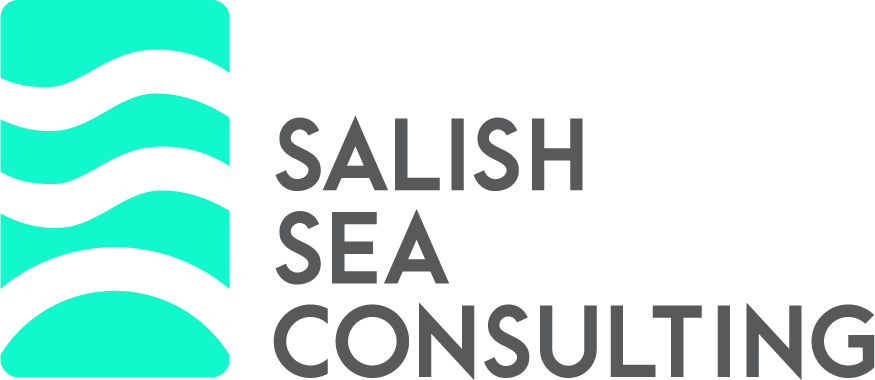Website Copywriting Guide: How to Use Storytelling to Convert More Visitors (2025)

Learn proven website copywriting techniques that convert visitors into customers. 5 storytelling frameworks + conversion copywriting strategies + step-by-step implementation guide.
Websites using storytelling in their copywriting convert 30% more visitors than feature-focused sites. Most businesses make the same copywriting mistake: they list features instead of telling stories that sell.
Your customers don't buy features. They buy transformations.
What is Website Copywriting (And Why Storytelling Changes Everything)
Website copywriting is the art of writing persuasive text that guides visitors toward taking action. Traditional copywriting focuses on benefits and features. Conversion copywriting takes it further by using psychological triggers.
But storytelling-based copywriting? That's where the magic happens.
Traditional website copy: "We offer project management software with 47 features."
Conversion copywriting: "Increase team productivity by 40% with our project management system."
Storytelling copywriting: "Sarah used to work weekends because her team's projects were always behind schedule. She tried spreadsheets, sticky notes, even hiring an assistant. Nothing worked. Then she discovered our planning system. Now her team finishes projects early, and Sarah hasn't worked a weekend in six months."
Which version makes you want to learn more?
The 5 Website Copywriting Frameworks That Convert
Framework 1: The Hero's Journey Landing Page
Use this for: Service businesses, consultants, agencies
The copywriting structure: • Hero (your customer) faces a challenge • Meets a guide (your business)
• Gets a plan (your process) • Takes action (your solution) • Achieves success (the outcome)
Real example: A marketing consultant's homepage opens with "You're working 60-hour weeks but your revenue isn't growing." The copy walks through their proven system, ending with client transformation results.
Conversion copywriting tip: Position yourself as the wise guide, not the hero. Your customer is Luke Skywalker. You're Yoda.
Try this: Rewrite your homepage hero section. Start with your customer's biggest frustration, not your company history.
Framework 2: Problem-Solution Website Copy Flow
Use this for: E-commerce, software, problem-solving products
The copywriting structure: • Present the pain point clearly • Show what happens if nothing changes • Introduce your solution • Prove it works with social proof
Real example: A sleep app's website copy opens with "You lie awake at 2 AM, mind racing about tomorrow's presentation." The copy builds tension, then shows how their guided meditations help users fall asleep in under 10 minutes.
Conversion result: This storytelling approach increased signups by 89% compared to features-first website copy.
Try this: List your customers' top 3 pain points. Build your homepage copy around the most urgent one.
Framework 3: Before-During-After Transformation Copy
Use this for: Coaching, fitness, education, personal development
The website copywriting structure: • Before: Current frustrating state • During: Your method or process
• After: Desired outcome with proof
Real example: A fitness coach's website shows three copy blocks: "Exhausted after climbing stairs" → "Custom 20-minute workouts" → "Running your first 5K in 8 weeks."
Conversion copywriting insight: Visual timelines combined with transformation copy increase engagement by 67%.
Try this: Create website copy that shows your customer's transformation journey. Use real testimonials at each stage.
Framework 4: The Comparison Website Copy
Use this for: Competitive markets, disruptive products
The copywriting structure: • Old way: How people currently solve the problem • New way: Your better approach • Why it matters: The difference in results
Real example: A project management tool's website copy contrasts "Email chains and spreadsheets" with "Real-time collaboration and automated updates." Their copy shows side-by-side screenshots of chaotic email threads versus their clean interface.
Conversion copywriting tip: Don't just compare features. Show the emotional difference between frustration and relief.
Try this: Create comparison copy that tells a story. Show the emotional journey, not just feature differences.
Framework 5: The Origin Story Website Copy
Use this for: Personal brands, founder-led companies, mission-driven businesses
The copywriting structure: • The moment everything changed • The struggle to find a solution • The breakthrough insight • Your mission now
Real example: A financial advisor's website copy shares how her family lost their savings in 2008 because they trusted the wrong person. Her About page copy explains how she now helps families protect their wealth with transparent strategies.
Conversion result: Her About page generates 40% of her new client inquiries through storytelling-based website copy.
Try this: Write website copy about the moment you realized your industry needed to change. Make it personal and specific.
Website Copywriting Implementation Guide
Step 1: Audit Your Current Website Copy
Conversion copywriting audit checklist: • Does your copy start with a customer problem? • Is there a clear story arc in your website copywriting? • Do you position yourself as the guide, not the hero? • Does your copy end with a transformation?
Score each page from 1-10. Pages scoring below 6 need immediate website copywriting attention.
Step 2: Choose Your Copywriting Framework
Service business? Use Hero's Journey copywriting Product company? Use Problem-Solution website copy
Personal brand? Use Origin Story copywriting Competitive market? Use Comparison website copy
Step 3: Map Your Customer's Journey for Better Website Copy
Conversion copywriting exercise: Write your customer's story in three sentences:
- What problem keeps them awake at night?
- What have they tried that didn't work?
- What does success look like for them?
Your website copywriting should follow this exact emotional arc.
Step 4: Write Your Conversion Copy
Website copywriting formula for each section:
Hero section: Problem + Emotional impact "You're spending $5,000 monthly on ads but getting zero qualified leads."
Features section: Your solution + How it works
"Our targeting system finds people actively searching for your service."
Social proof: Real results + Specific numbers "Maria generated 47 qualified leads in her first month."
Call to action: Next step + What happens next "Book a 15-minute strategy call. We'll analyze your current ads and show you exactly how to fix them."
Step 5: Design Supports Your Website Copywriting
Visual storytelling tips for better conversion copywriting: • Use arrows or numbers to show progression • Include photos of real customers, not stock images • Create contrast between "before" and "after" states in your copy • Place your strongest testimonial near the call-to-action
Step 6: Test and Optimize Your Website Copy
Conversion copywriting metrics to track: • Time on page (should increase with good storytelling copy) • Scroll depth (people read further when engaged by your website copywriting) • Conversion rate (the ultimate test of your copy) • Bounce rate (should decrease with better website copy)
A/B testing tip: Run your storytelling copy against your current website copy for two weeks. Let the data decide which converts better.
Common Website Copywriting Mistakes
Mistake 1: Making Your Brand the Hero in Your Copy
Wrong website copywriting: "We've been helping businesses succeed since 2015." Right conversion copywriting: "You started your business to have freedom, not work 80-hour weeks."
Remember: Your customer is Luke Skywalker. You're Yoda.
Mistake 2: Starting Website Copy with Background Information
Wrong website copywriting: "Founded by two Stanford graduates with 20 years of experience..." Right conversion copywriting: "Your competitor just launched a product identical to yours."
Start your website copy with urgency, not credentials.
Mistake 3: No Clear Transformation in Your Copy
Wrong website copywriting: "Our software has many great features." Right conversion copywriting: "Go from scattered sticky notes to organized project delivery in 30 days."
Your website copy should show the destination, not just the vehicle.
Real Website Copywriting Results: Case Studies
Case Study 1: SaaS Company (+127% Conversion Through Better Copy)
Before: Homepage copy listed 15 software features After: Website copywriting told story about startup founder struggling with manual processes Change: Rewrote hero section using storytelling-based conversion copywriting Result: Free trial signups increased from 2.3% to 5.2% in 8 weeks
Case Study 2: E-commerce Brand (+89% Time on Site with New Copy)
Before: Product pages had generic copywriting descriptions After: Each product page used storytelling-based website copy showing customer transformations Change: Applied Before-During-After framework to all product copywriting Result: Average session time grew from 1:23 to 2:37, sales increased 34%
Case Study 3: Consulting Firm (+203% Leads from Website Copy)
Before: Generic "About Us" page with company history copy After: Founder's origin story using conversion copywriting principles Change: Rewrote About page using storytelling framework for website copywriting Result: Contact form submissions tripled within 3 months
Advanced Website Copywriting Strategies
Conversion Copywriting Psychology Tips:
• Use "you" and "your" throughout your website copy • Include specific numbers in your copywriting (not "many" or "most") • Address objections before they arise in your website copy • Create urgency without being pushy in your conversion copywriting
Website Copywriting for Different Industries:
• B2B: Focus on ROI and efficiency in your copy • E-commerce: Emphasize benefits and social proof in website copywriting • Services: Lead with transformation stories in your conversion copywriting • SaaS: Show workflow improvements in your website copy
Your Next Steps for Better Website Copy
Pick one framework from this website copywriting guide. Rewrite your homepage hero section using that storytelling structure.
Test your new conversion copywriting for two weeks. Measure the difference.
Quick win: Replace "We help businesses" with "You're struggling with" in your hero headline. This simple website copywriting change shifts focus from your company to your customer's problem.
Advanced tip: Use storytelling principles in your email sequences, social media copy, and sales presentations - not just your website copywriting.
Remember: People don't buy products. They buy better versions of themselves. Your website copywriting should reflect that truth.
What story will your copy tell?




